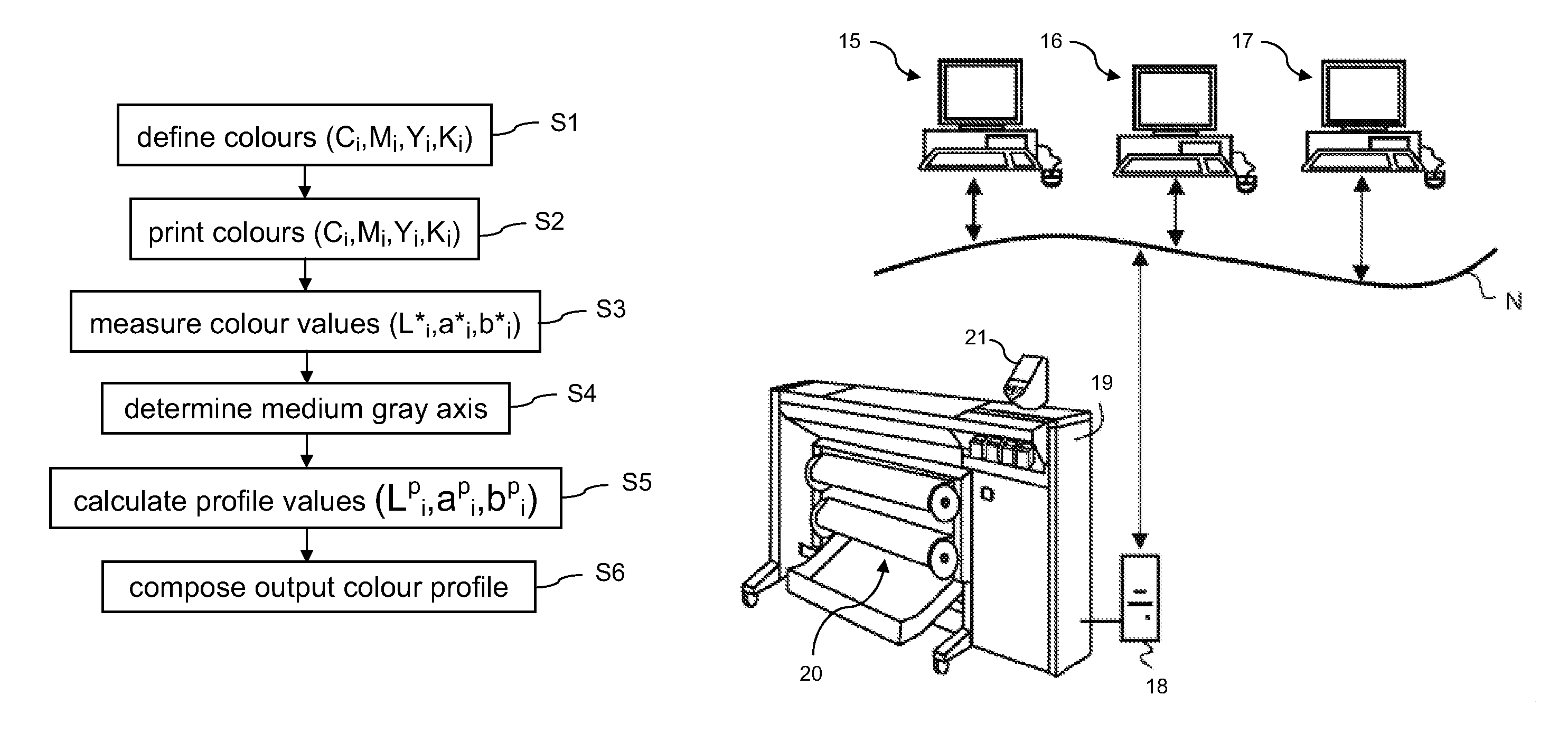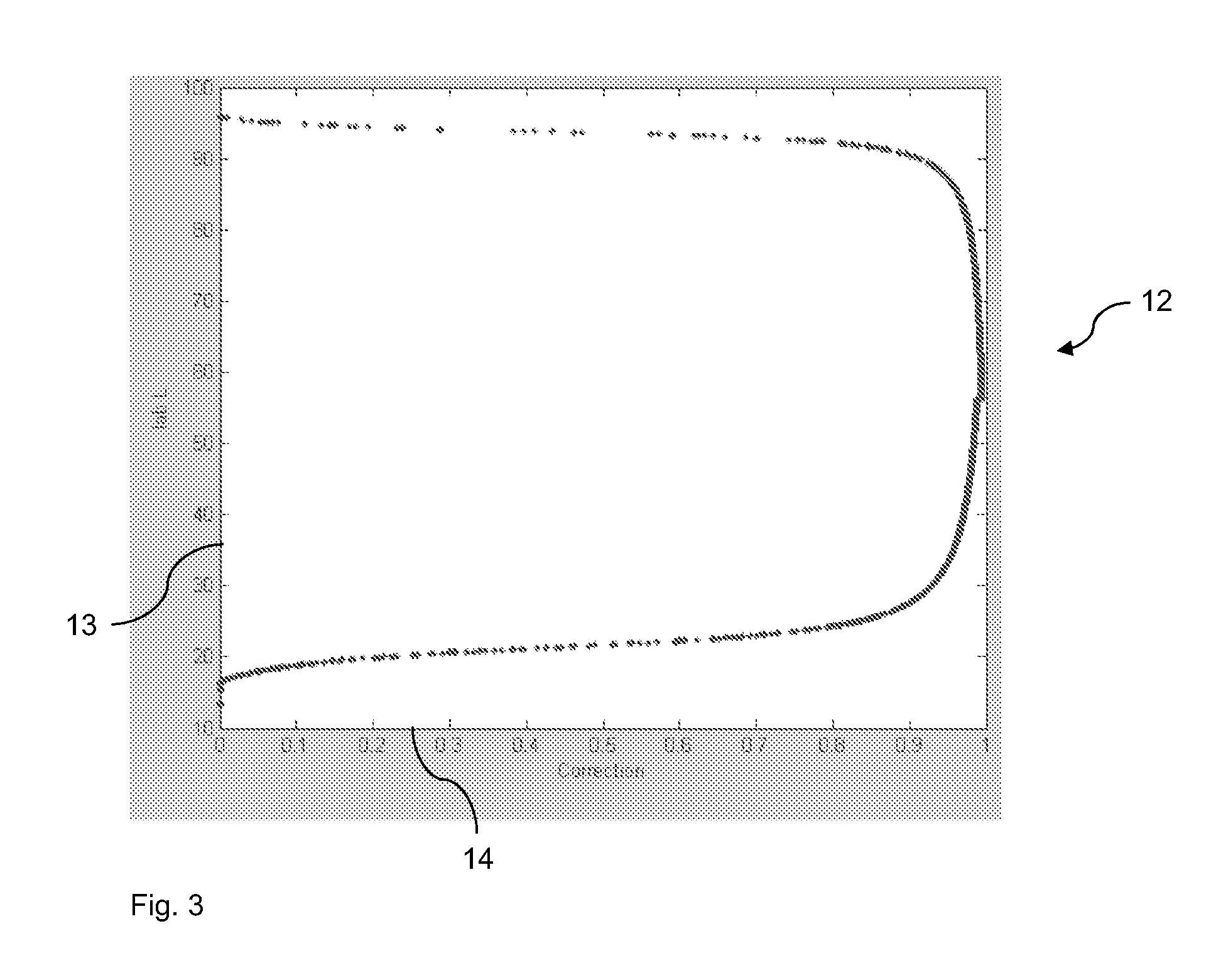Output profile for colour reproduction system
a colour reproduction and output profile technology, applied in the direction of electrical equipment, electric digital data processing, instruments, etc., can solve the problems of inferior reproduction and no rendering intent known to satisfy the different demands
- Summary
- Abstract
- Description
- Claims
- Application Information
AI Technical Summary
Benefits of technology
Problems solved by technology
Method used
Image
Examples
Embodiment Construction
[0028]In FIG. 1 a conventional colour space (1) is shown as set up by the three axes of CIELAB. This colour space is defined by the Commission International de I'Eclairage (CIE, www.cie.co.at). The a*-axis (2) represents a red-green balance, the b*-axis (3) represents a yellow-blue balance and the L*-axis (4) represents a lightness of colours. Neutral colours are positioned on the L*-axis. The position of a perfectly diffuse white reflecting colour is (L*, a*, b*)=(100, 0, 0), neutral white (5), which is the most light reflecting colour. The position of the darkest neutral colour is (0, 0, 0), neutral black (6). The colour of a predefined medium, medium white, is in general not on the neutral axis. In FIG. 1 it is indicated as a bluish colour (7), which has a negative b*-value. By application of a full coverage of only black colorant the colour full black is obtained (8). Usually the colour full black is closer to the neutral axis than the colour medium white. Between the colour med...
PUM
 Login to View More
Login to View More Abstract
Description
Claims
Application Information
 Login to View More
Login to View More - R&D
- Intellectual Property
- Life Sciences
- Materials
- Tech Scout
- Unparalleled Data Quality
- Higher Quality Content
- 60% Fewer Hallucinations
Browse by: Latest US Patents, China's latest patents, Technical Efficacy Thesaurus, Application Domain, Technology Topic, Popular Technical Reports.
© 2025 PatSnap. All rights reserved.Legal|Privacy policy|Modern Slavery Act Transparency Statement|Sitemap|About US| Contact US: help@patsnap.com



